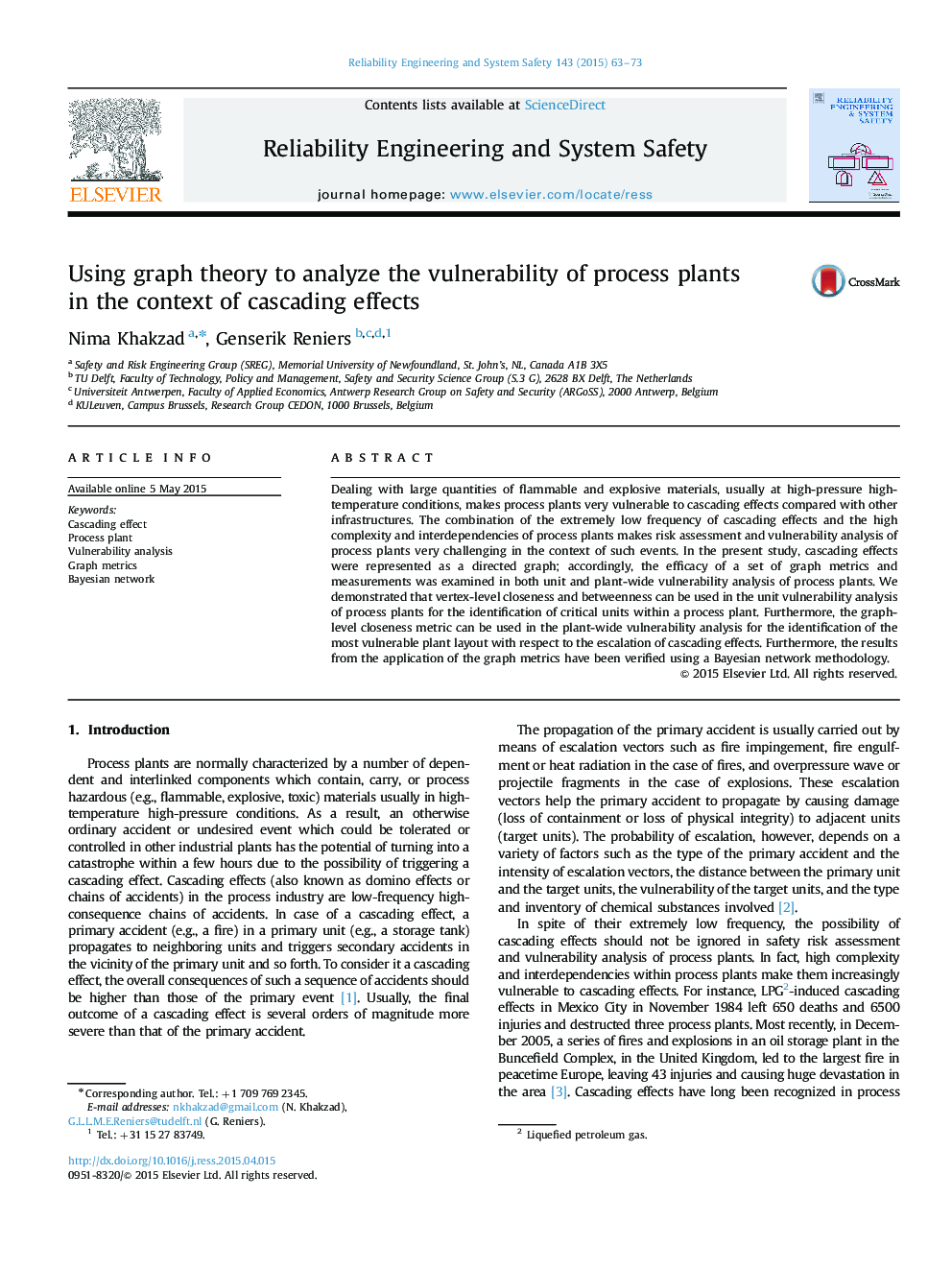| Article ID | Journal | Published Year | Pages | File Type |
|---|---|---|---|---|
| 803058 | Reliability Engineering & System Safety | 2015 | 11 Pages |
•Graph metrics can effectively be employed to identify vulnerable units and layouts in process plants.•Units with larger vertex-level closeness result in more probable and severe cascading effects.•Units with larger vertex-level betweenness contribute more to the escalation of cascading effects.•Layouts with larger graph-level closeness are more vulnerable to the escalation of cascading effects.
Dealing with large quantities of flammable and explosive materials, usually at high-pressure high-temperature conditions, makes process plants very vulnerable to cascading effects compared with other infrastructures. The combination of the extremely low frequency of cascading effects and the high complexity and interdependencies of process plants makes risk assessment and vulnerability analysis of process plants very challenging in the context of such events. In the present study, cascading effects were represented as a directed graph; accordingly, the efficacy of a set of graph metrics and measurements was examined in both unit and plant-wide vulnerability analysis of process plants. We demonstrated that vertex-level closeness and betweenness can be used in the unit vulnerability analysis of process plants for the identification of critical units within a process plant. Furthermore, the graph-level closeness metric can be used in the plant-wide vulnerability analysis for the identification of the most vulnerable plant layout with respect to the escalation of cascading effects. Furthermore, the results from the application of the graph metrics have been verified using a Bayesian network methodology.
